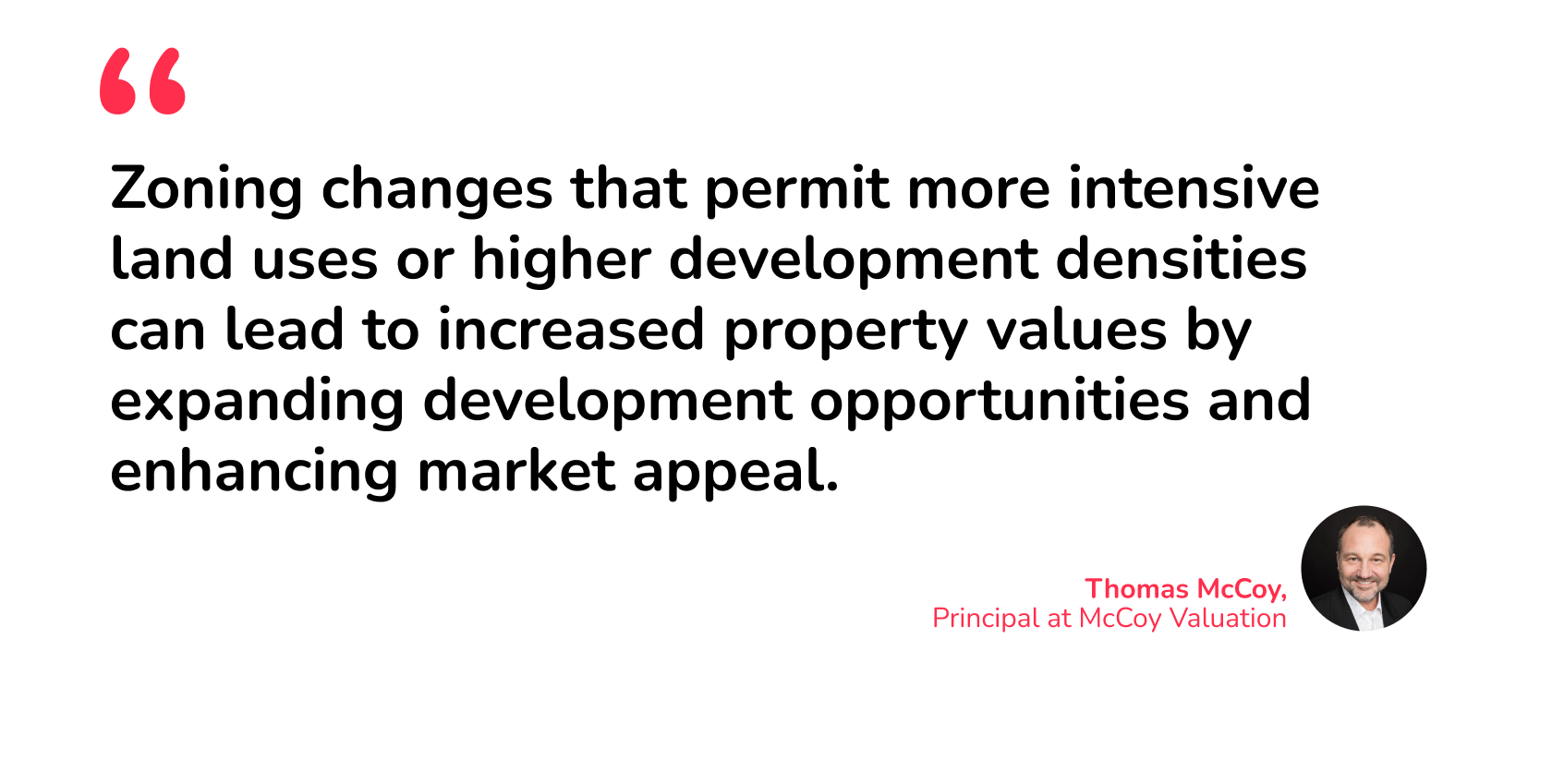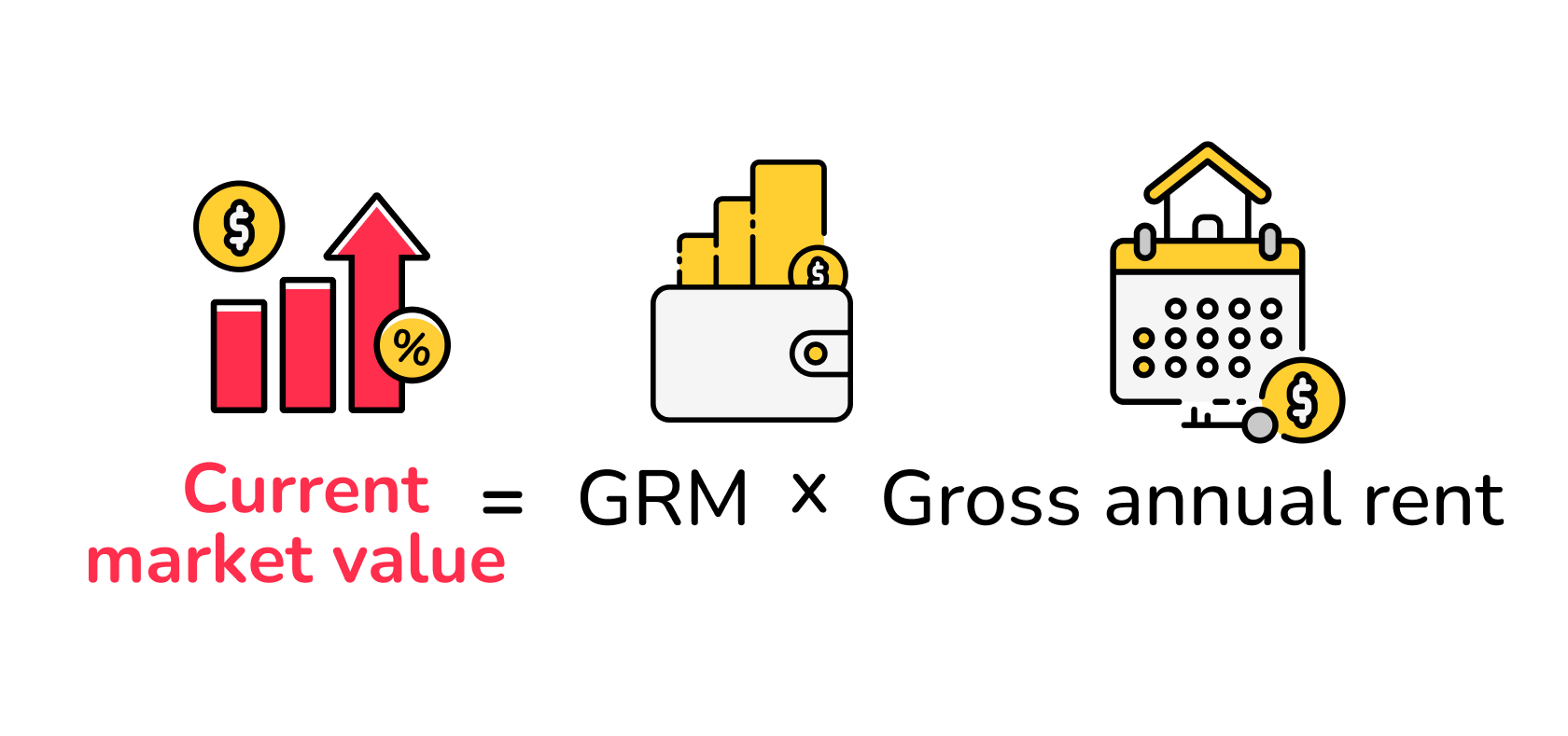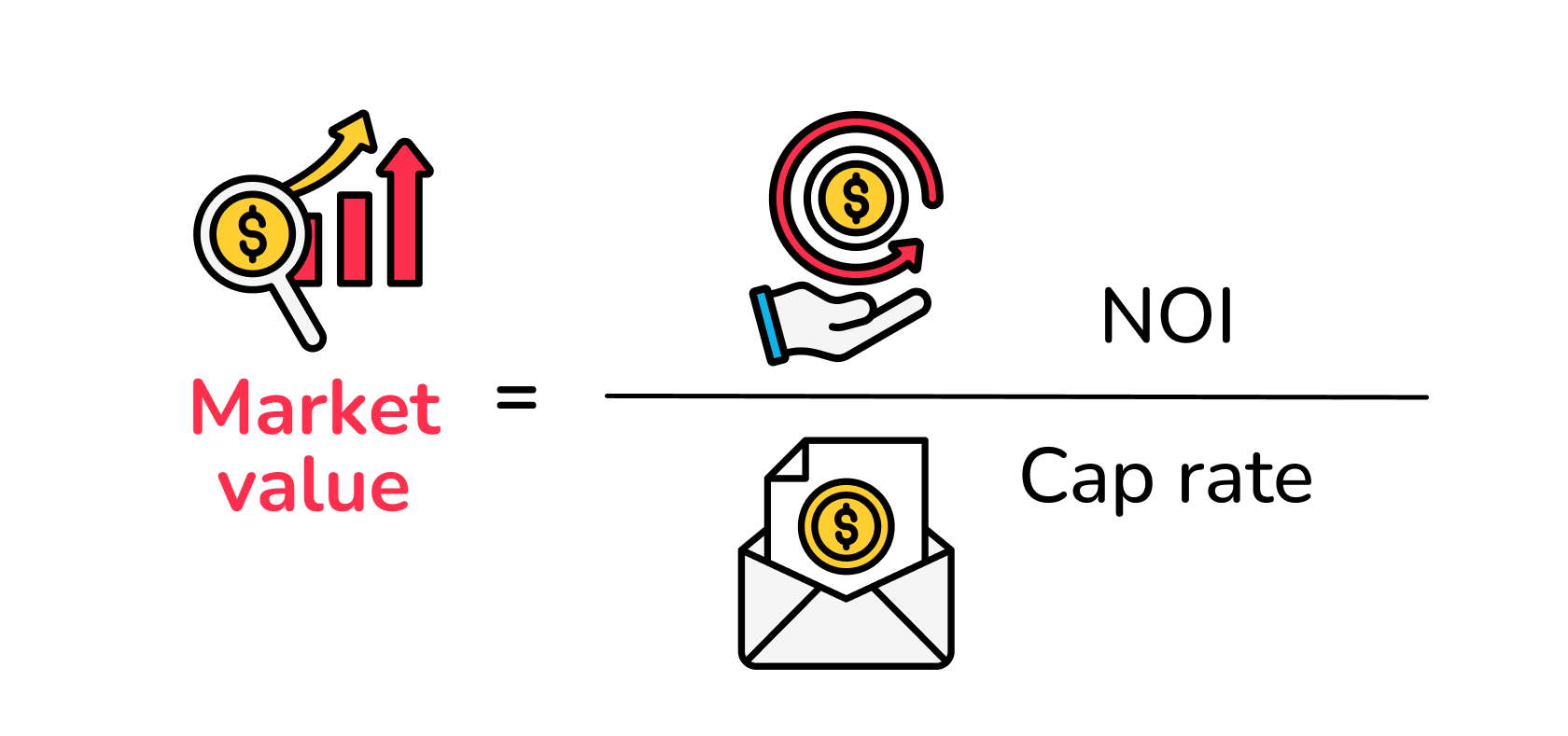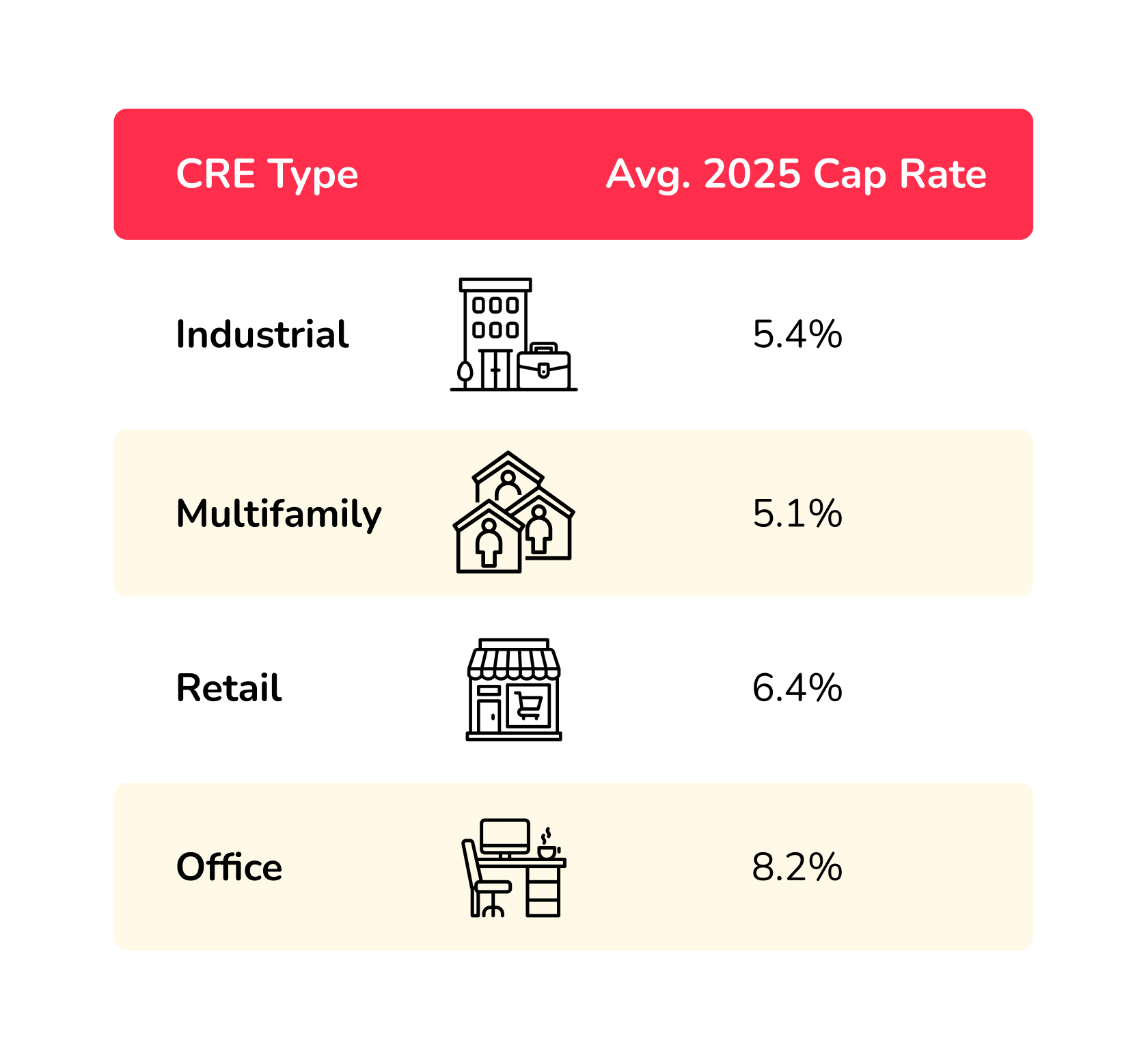Commercial Land Value in 2026: How to Calculate What an CRE Acre Is Really Worth

How much is commercial land worth right now? It’s the first question developers ask, and also the one nobody answers cleanly.
Some owners still price land like it’s 2021. Some brokers pitch “future potential” instead of real numbers.
Meanwhile, interest rates, tenant demand, construction costs, and zoning pressure all play their part in pushing values up or down.
So when you’re standing on a piece of dirt that might become your next project, the real question is more “Does this land earn its keep in today’s market?” than simply “what’s the price?”
That’s what this guide helps you answer. In what follows, you’ll find out how to calculate how much commercial land is worth as we go through 2026, using real valuation methods, updated data, and math investors actually use before writing an LOI.
If you’re trying to buy smarter in a difficult real estate market, this will help you keep a clear head to make more informed decisions as we move through 2026.
We’ll cover the following:
- What will drive commercial land value in 2026?
- What is a commercial acre?
- How much is commercial land worth per acre in 2025?
- How to calculate how much commercial land is worth (4 proven methods)
- How to calculate commercial land value per acre (or feet)
- How developers will use valuation numbers in 2026
Want to buy commercial land? Contact Duckfund to find out how our fast, flexible financing can secure your next deal in 48 hours.
What will drive commercial land value in 2026??
Commercial land valuation is never a one-size-fits-all measure because too many factors push prices up or down.
Yet there are a few variables that tend to shape value across most markets. Here’s a rundown of the ones you should consider.
Location and momentum
You can find data about rising (and falling) US markets online. This way, you’ll get a clear idea of which areas have the most momentum.
The USDA, for example, releases an agricultural land report that highlights fresh farmland market trends.
A glance at this year’s version shows how Michigan and Tennessee farmland is currently posting some of the fastest annual growth, close to 8%.
US Farmland Value Differences (2021-2025)

Source: USDA
Markets like these may be prime for investment opportunities if experts predict the momentum to continue.
At the same time, areas with office oversupply or slowing population growth often see softer land prices, which can create buying opportunities for real estate investors willing to take a calculated risk.
Zoning flexibility
Land with zoning that supports many different commercial uses tends to be worth more than parcels restricted to niche uses. These might include industrial, mixed-use, or multifamily development – plus even data centers.
If you’re able to extend zoning permissions after you buy, this could also lead to a higher valuation.
“Zoning changes that permit more intensive land uses or higher development densities can lead to increased property values by expanding development opportunities and enhancing market appeal,” says Thomas McCoy, Principal at McCoy Valuation.

Flexibility often beats square footage thanks to the Highest and Best Use (HBU) principle. Investors use this to maximize value and adapt to market shifts.
Infrastructure access
Is your potential commercial land development close to vital infrastructure? By this, we mean:
- Highways and logistics corridors
- Schools and hospitals
- Transit hubs
Valuers love these amenities because they bring down both developer risk and the time it takes to find tenants.
Environmental and physical constraints
In a world beset by climate change, environmental factors play an important role.
Flood zones, irregular lot shapes, utility challenges, and soil issues can drop value quickly. For this reason, clean, rectangular parcels with utilities already in place usually command a premium.
Interest rates and lending conditions
Higher interest rates reduce what developers can pay for land without breaking the deal.
This factor alone has reshaped valuations since 2022 and continues into 2025, so buyers are running stricter pro formas and approaching land with far more caution than they did a few years ago.
When commercial land gets expensive, investors care a lot more about the fundamentals — what’s buildable, what isn’t, and how much land they’re actually getting.
Seemingly small things like easements, setbacks, or unusable square footage can make or break a project’s math.
That’s why understanding how commercial land is measured (and what counts as “usable”) becomes a big part of deal-making in a high-rate environment.
What is a commercial acre?
There’s a key difference between how we measure commercial land compared to standard plots.
- A standard acre is 4,840 square yards.
- A commercial acre is 4,000 square yards.
The difference accounts for roads, sidewalks, setbacks, and access lanes — the things you can’t build on but still have to budget for.
When comparing prices between parcels, always check whether the listing uses standard or commercial acres so you’re not running inaccurate comps.
How much is commercial land worth per acre in 2025?
So, how much is an acre of commercial land worth right now?
Figuring this out in 2025 isn’t straightforward.
There’s no single national index for commercial acreage, and prices swing wildly depending on what the land can be used for, where it sits, and how much demand is flowing through that market.
Even public datasets only capture a slice of the picture. Take agricultural land: the USDA can tell us the average U.S. cropland value in 2025 was $5,830 per acre, while pastureland averaged $1,920 — helpful, but not exactly representative of what a developer pays for commercially zoned investment property.
Move into true commercial or industrial categories, and the spread widens fast. A Michigan municipality assessed industrial land at $14,500 per acre for a one-acre site and $19,600 for a two-acre parcel. Meanwhile, in places like Alachua County, Florida, small city lots can clear $100,000+ per acre simply because of location and zoning intensity.
The bottom line: land value is hyper-local, heavily use-dependent, and shaped by any number of factors ranging from environmental constraints to zoning options.
That’s why any valuation needs context, and why ranges often tell the story better than a single number.
How to calculate how much commercial land is worth (4 proven methods)
If you want to value a piece of land today, you’ll end up using at least one of these four methods.
Most real estate professionals use two or more to triangulate a realistic sales price, so feel free to combine several of these.
1. Sales comparison approach (Comps)
This method compares the subject land to recent sales of similar parcels.
How it works
- Find similar land sales in the area.
- Adjust for differences in zoning, utilities, size, access, or condition.
- Apply the adjusted price to the subject parcel.
Example
A comparable parcel sold for $1.2 million but had road access that your parcel lacks. Let’s assume an 8% reduction for this example, your estimated land value then becomes:
$1,200,000 × 0.92 = $1,104,000
Comps are the fastest way to estimate value, but if the market is slow, data can be stale. Always check sale dates.
2. Cost approach
This model evaluates the land based on what was paid for it plus improvements, minus depreciation. It works best for redevelopments, owner-held land, and parcels with site work already completed because buyers rarely have access to precise cost and depreciation data.
How it works (example)
Let’s say the land was bought for $1 million five years ago. The previous owner carried out site improvements worth $500,000, but the improvements depreciated $70,000 in that time.
Your cost approach value would be:
$1,000,000 + $500,000 − $70,000 = $1,430,000
Note: This limited visibility into historical costs means most developers use the cost approach as a secondary check, not their primary valuation method.

3. Gross Rent Multiplier (GRM)
If you’re valuing land that produces income (or could easily be leased), GRM gives you a quick back-of-napkin estimate. Unlike the income (capitalization rate) method, GRM uses gross rental income, not net operating income (NOI).
Before we go further: NOI (Net Operating Income) = Income after operating expenses, but before debt service. It’s the core number used in professional CRE valuations, but GRM skips it entirely, which is why it’s simpler but less precise.
GRM Formula

How it works (example)
Let’s say gross annual rent is $60,000 and comparable GRM is 5.
Land market value = $60,000 x 5 = $300,000
Note: GRM is best used as a supporting metric, not your main valuation method, because it doesn’t account for expenses, vacancy, or market risk. Think of it as a quick price check to see if other methods are in the right range.
4. Income approach or capitalization rate (cap rate) method
This is the professional investor’s go-to valuation, too – especially for land leased to tenants, like ground leases, billboards, parking, or outdoor storage.
It’s based on the simple idea that the value of a commercial property comes from the income potential it produces relative to market return expectations.
Again, NOI is the income stream that investors capitalize to determine value.
Income approach formula

What is a good cap rate for commercial real estate?
Cap rates vary by property type in commercial real estate investing. Here are the 2025 averages, according to the latest figures from CBRE.

How the income approach works (example)
Imagine you’re evaluating a parcel of commercial land that could support an office development. After running the numbers, you project the land could generate $75,000 in annual NOI through a ground lease or similar income stream.
Based on current market data (see above), the average 2025 office cap rate sits around 8.2%.
Using the income approach, the valuation looks like this:
$75,000 ÷ 0.082 = $914,634
If market conditions shift and office cap rates rise, your valuation would fall. When cap rates climb, values decline. When they compress, prices move higher.
How to calculate commercial land value per acre (or feet)
We don’t wish to state the obvious, but estimating the commercial land value per acre is easy once you’ve estimated the total value, as above
Value per acre = Total land value ÷ Number of acres
An example for an 8-acre plot worth $2.4 million would be as follows:
$2,400,000 ÷ 8 = $300,000 per acre
When parcels have odd shapes or unusable sections, developers often calculate the price per square foot instead for accuracy:
Remember that a commercial acre = 36,154.8 sq ft. So for this example, it would be: $300,000 ÷ 36,154.8 = $8.29 per sq ft.
How developers will use valuation numbers in 2026
Developers aren’t just calculating “How much is commercial land worth?” They’re trying to understand how far they can stretch before the deal stops making sense.
Here’s how valuation helps, whether it’s per plot or per acre/foot.
- Setting a realistic walk-away number
With tighter CRE lending options around, you need a cleaner ceiling price than in earlier, cheaper-money cycles. A valuation creates a rational upper limit before emotions or optimism start driving offers.
- Comparing markets without emotion
Speaking of which, a parcel that feels cheap may have slower lease-up or more expensive site work. An estimated value gives you an objective benchmark, helping you see when a “bargain” is actually masking long-term risk or higher carrying costs.
- Stress-testing deal viability
Cap rates, NOI projections, construction costs, gap funding requirements, and time-to-entitlement all influence how much land you can realistically afford.
Developers use valuation ranges to model multiple scenarios (best case, base case, and worst case) before deciding whether to move forward.
- Justifying offers to sellers
When comps conflict or sellers anchor to old pricing, math is your strongest negotiation tool.
More developers now cross-check valuations from multiple methods and average them to find a reliable range, especially in markets with limited sales activity.
How much is commercial land worth? Key takeaways
Commercial land values in 2025 are a moving target that’s affected by a wide gamut of factors. The only accurate answer comes from running the math.
Here’s what matters most:
Land prices vary widely because the market is hyper-local
Averages only tell part of the story. USDA data gives us numbers like $5,830 per acre for cropland, while some commercial parcels in Florida clear $100,000+ per acre.
Local market demand, zoning intensity, and site constraints determine the real number.
The four most reliable valuation tools are sales comps, the cost approach, the income (cap rate) method, and GRM.
Most developers use two or more methods and look for a value range, not a perfect figure. In thin markets, this cross-checking is essential.
Converting total value to per-acre or per-square-foot pricing keeps comparisons honest.
A parcel worth $2.4 million becomes $300,000 per acre, or $8.29 per sq ft when using commercial-acre math. This is what developers rely on when setbacks or easements shrink usable space.
In a high-rate environment, valuation is as much about discipline as pricing.
Developers use these numbers to set walk-away limits, pressure-test pro formas, negotiate with sellers, and avoid deals that don’t pencil under 2025 lending conditions.
The real question isn’t just “How much is commercial land worth?”
It’s also “Does this parcel earn its keep?”. This will determine the value of the land (and the value of the property you can build on it) far more reliably than any asking price or regional average.
If the land doesn’t support the NOI, cap rate, or yield that you need, its “price” is irrelevant.
Earnest money shouldn’t be the reason you miss out on commercial land. Sign up for Duckfund and unlock fast, flexible funding in minutes.
Real Estate
Financing

- Approval within 24 hours
- Fund multiple properties at once
- No full deposit upfront — soft deposit only
- Equity and debt financing options
- Apply in under 2 minutes
Secure your next development — zero upfront capital required.
Start with Duckfund’s Sign Now, Pay Later model.- No capital commitment
- Close faster
- Scale with confidence
